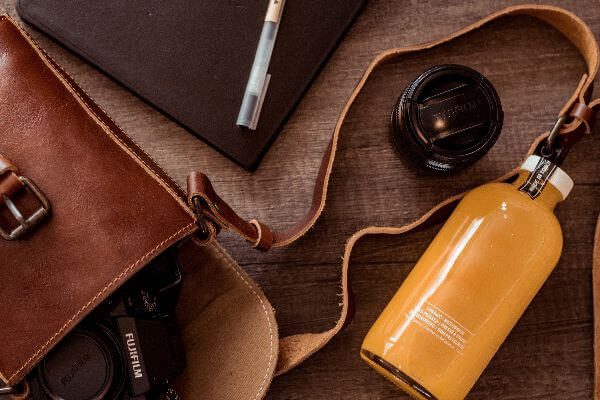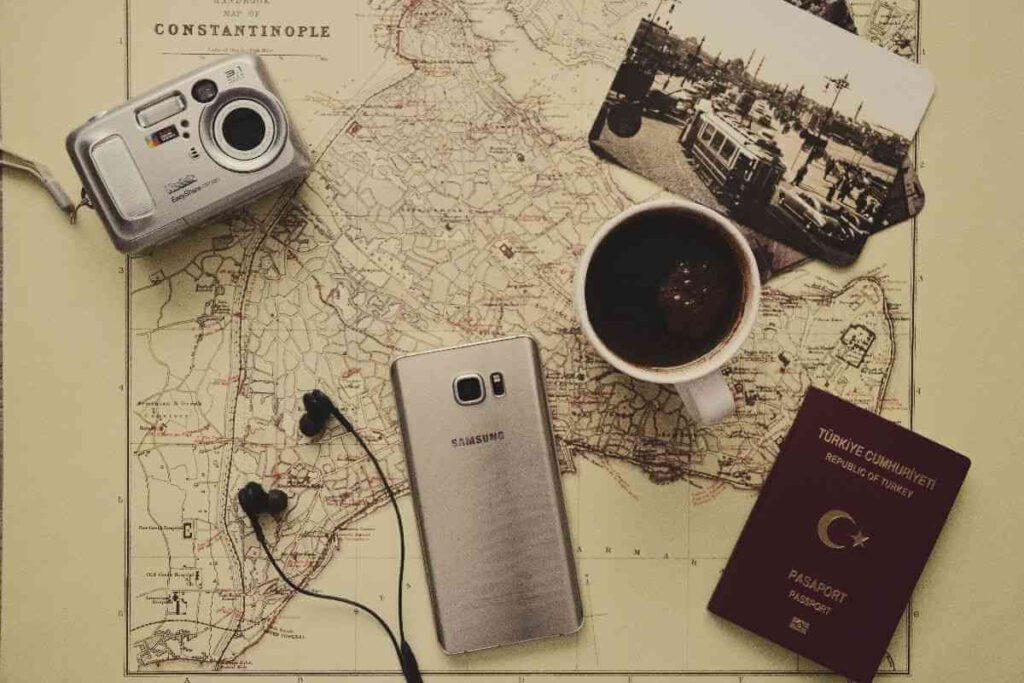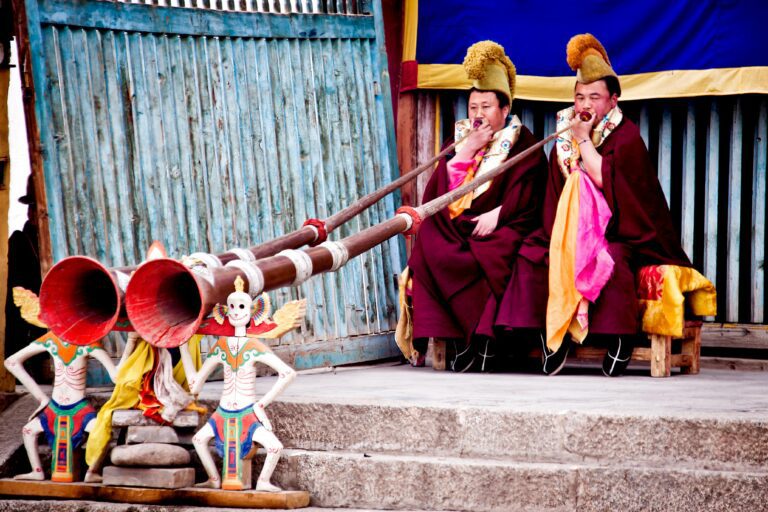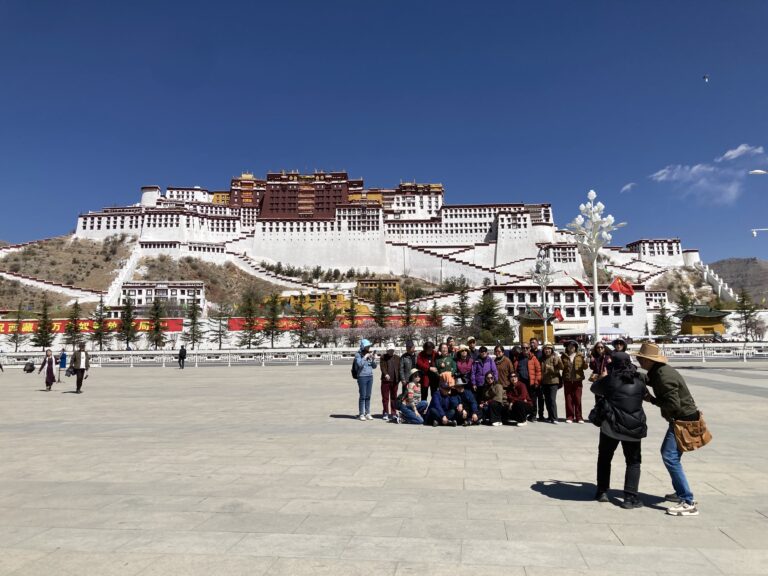What Do You Need to Prepare for a Trip to Tibet? – Getting Properly Equipped
Discovering you forgot something important for your Tibet trip is a real bummer. Lhasa and the whole plateau couldn’t be any different from places like London or Paris. It’s harder and much more expensive to find last-minute gear and personal items.
No matter if you are…
- an expat in China preparing for a Tibet tour
- a true adventurer located somewhere in the world
- or a combination of these…
you’ll find the following post useful for preparation. We’ll go over the main suggestions for having a stress-free and enjoyable trip of a lifetime to Tibet.
Explore Tibet Guided Small Group Tours
#1: What should you wear in Tibet?
Tibet has distinct seasons. That’s why we’ll need to focus on each separate period.
-
Spring (March, April, May)
Spring is a nice time to visit Tibet. During the daytime, you can wear a jacket, light sportswear, and a sweater. But the temperatures drop after the sunset. Have warmer clothes ready for the nights.
Even though spring is milder than winter, take care to pack thermal underwear and long johns.
-
Summer (June, July, August)
Does summer sound like weather ripe only for T-shirts? It’s the plateau, not Bali. You’ll experience a variety of temperatures. There are stark differences between day and night. Pack warmer clothes for the cold nights. - The weather could be warm enough for extra light clothes during the daytime. But we recommend long-sleeved shirts instead of tees. You’ll face significant UV-radiation in Tibet. It’s good to take cautionary steps, such as covering your skin and applying sunscreen.
-
Autumn (September, October, November)
Lhasa could be surprisingly warm in the autumn. Lighter sweaters and sportswear work just fine. But higher altitudes have colder weather. Planning a trip to the EBC? You’ll definitely need an extra warm jacket. -
Winter (December, January, February)
Winter is cold, so pack your clothes accordingly. Use the following approach to maximize comfort:- Base layer against your skin
- An insulating middle layer
- Proper winter clothing for an outer shell
Socks, shoes, hats, and gloves should withstand harsh temperatures. Especially if you plan on getting out of Lhasa. The capital sees moderate temperatures compared to higher altitudes.
NB! Don’t forget that you still need solar protection in the winter. As winter outdoor enthusiasts can attest, you could easily get a sunburn in the mountains.
#2: What are the must-haves for packing?
Most people find packing stressful, to say the least. We’ll try to make it easier for you by providing this handy list of must-haves for your Tibet trip.

- Short and long-sleeve shirts
- Sweaters
- Hoodie
- Scarf (cold months)
- Down jacket
- Gloves (cold months)
- Windproof clothing articles
- Backpack & daypack
- Waterproof containers for electronics
- Thermal and regular socks
- Chinese Visa
- Tibet Travel Permit
- Passport copies (both paper and digital)
- Credit or debit cards
- Toilet paper
- Camera
- Personal hygiene items
- Hand sanitizer
- Sunglasses
- Sunscreen
- Moisturizer
- Medicines
- Memory cards for your camera or smartphone
- Tripod (if you are keen on taking high-quality photos)
- Sleeping bag (depending on your tour)
- Rain gear, such as cover for your backpack
- Power bank
- Lip balm with UV-protection
- Swimming suits (when visiting hot springs)
- Binoculars
These are the basics. However, you should consult with your Tibet tour guide. Depending on the company, you could rent some of the items or get them at no extra cost. For example, sleeping bags and hiking poles.
Your ultimate packing list is determined by the season and planned activities. Nobody can provide a ‘perfect Tibet packing list’ without factoring in the period of visit and plans.
#3: What should be in the personal medical kit?

Preparation is the key to success. Have the following items ready in your medical kit:
- Painkillers
- Band-Aids
- Cold and flu medication
- Antibiotics *
- Altitude sickness pills *
- Anti-diarrhea medicine
- Motion sickness pills
- Allergy medication
- Complex vitamin and electrolyte supplements
- Cough drops or lozenges
* Always consult with your doctor. You may need a prescription. Discuss the side-effects and risks with your physician. The same goes for any personal medical needs.
#4: Do I need vaccinations for Tibet?
Generally, there are no mandatory vaccines for Tibet. However, people coming from certain countries might have to show proof of vaccination. Check this online before traveling to China.
We recommend the following vaccinations for your own safety:
- Hepatitis A
- Rabies
- Tetanus
- Typhoid
However, the final decision is up to you. Consult a qualified physician to make a smart choice.
#5: Any other tips on planning travel in Tibet?
Yes, we’ll list further suggestions to help you plan your epic Tibet trip.
- Break in new shoes before going on the trip.
- Consider Tibetan conservative culture. Avoid revealing clothes. No shorts in monasteries.
- Base layers are mainly for colder months.
- Never underestimate the sun. Pack all the UV-protective gear.
- Personal water bottle is an environmentally sustainable option. Consider taking one with you.
- Staying in a guesthouse or tent? It’s great to have a towel for these situations.
- Gore-Tex hiking boots work well even in winter conditions.
- Down jackets provide supreme insulation. These are a good choice in winter months or high altitudes year-round.
The bottom line: travel advice on preparing a trip to Tibet
Tibet is a unique destination. There are many things you need to consider when packing for your Tibet trip.
We have outlined the basics of packing in this article. Now you may wonder about the Tibet activities as well. Here you can learn more about the various tours in Tibet!








